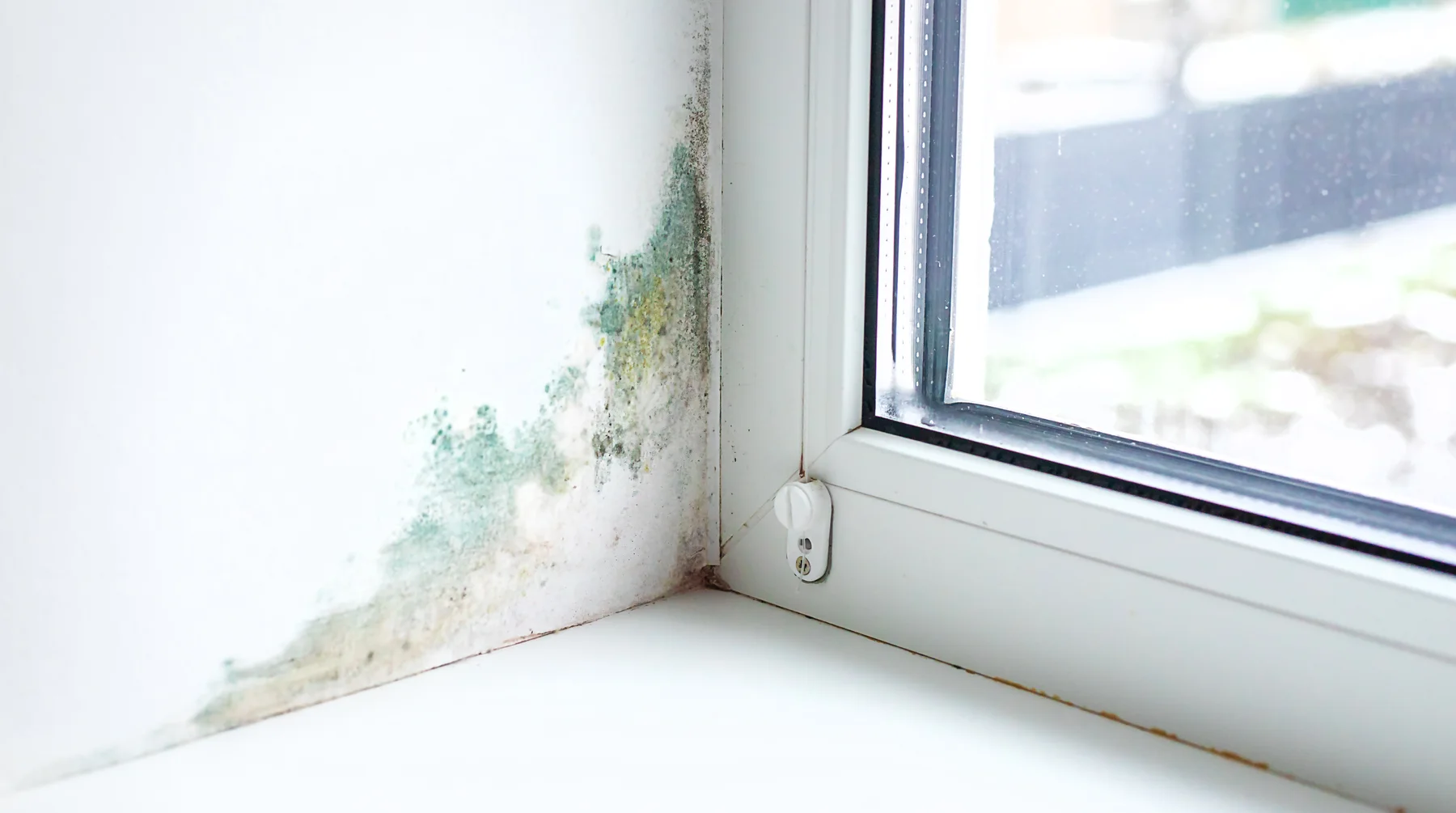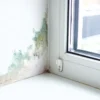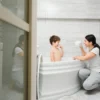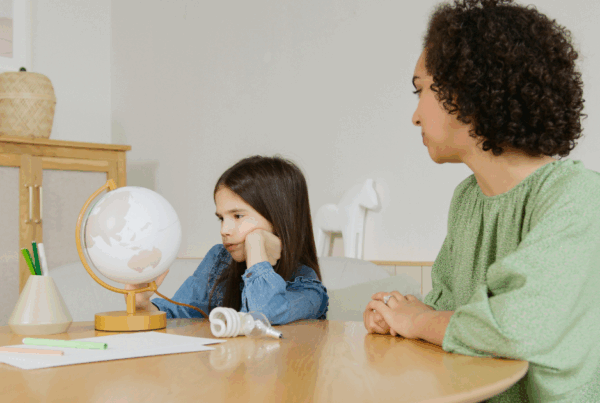Summary
Parents often notice their child struggling with anxiety, brain fog, or irritability that seems to have no clear cause. You have explored every option, but the neurological and emotional challenges remain. The answer might not be in their routine, but in the very air they breathe. While most people associate mold with allergies, the real culprit for these neurological issues is often invisible toxins called mycotoxins.
When inhaled, mycotoxins can cross the blood brain barrier and trigger significant inflammation. In children with conditions like PANS/PANDAS, autism, or ADHD, this can look like sudden mood swings, panic attacks, or difficulty concentrating. Research shows that mycotoxins play a powerful role in both physical and neurological symptoms. The key takeaway for parents is that their child’s unexplained anxiety may be a physiological response to their environment.
The good news is that parents can take action. The first step is identifying the potential source by looking for signs of mold in your home. Then, working with a practitioner, you can explore testing for mycotoxin illness and begin a gentle detoxification protocol to remove the toxins from your child’s body. When the toxic burden is reduced, kids often experience calmer moods and clearer focus.
If you suspect mold is impacting your child, you do not have to figure it out alone. Schedule a free discovery call to discuss your child’s case and learn how to navigate testing and detoxification.
FAQs
Q1. What are mycotoxins? Mycotoxins are invisible toxic substances produced by mold. When they become airborne, they can be inhaled and cause a wide range of health problems, particularly affecting the brain and nervous system.
Q2. Can mold cause anxiety in children? Yes. When inhaled, mycotoxins can cross the blood brain barrier and trigger inflammation in the brain. This can lead to neurological and emotional symptoms like anxiety, panic attacks, and irritability.
Q3. What are the most common mycotoxin symptoms? Common symptoms include anxiety, brain fog, memory issues, headaches, chronic coughing, sinus congestion, and skin rashes or hives.
Q4. What are the signs of mold in a house? Signs of mold include visible spots like black, green, or pink discoloration, a persistent musty or damp smell, and signs of water damage on walls, ceilings, or under sinks.
Introduction
Is your child struggling with anxiety, irritability, or brain fog that seems to have no clear cause? You’ve explored every option—from diet to sleep schedules—but the neurological and emotional challenges remain. The answer might not be in their routine, but in the very air they breathe.
Many parents don’t realize that common household mold releases invisible toxins called mycotoxins. When inhaled, these potent compounds can have a profound impact on the brain and nervous system. If you’re asking, “can mold cause anxiety?” the answer is a definitive yes. Understanding the connection between mold, mycotoxins, and your child’s health is the first step toward finding relief.
🍄 What Are Mycotoxins?
Mycotoxins are toxic secondary metabolites produced by fungi, including common indoor molds. They are invisible, often odorless, and can become airborne, settling on dust particles that are easily inhaled. The issue arises whenmold begins to grow inside a home, school, or office, leading to chronic exposure.
Crucially, many common indoor molds produce these harmful mycotoxins. Some of the most prevalent types include:
- Cladosporium: A brown, green, or black mold that can grow in both warm and cool areas.
- Penicillium: A fuzzy blue, green, or yellow mold often associated with water damage.
- Aspergillus: A powdery mold that is green, white, or gray with dark spots and spreads easily.
- Alternaria: A fuzzy white mold with black spots that thrives in damp spots like showers or leaky sinks.
- Aureobasidium: A pink mold with black spots commonly found on wood, walls, and grout.
- Stachybotrys chartarum: Also called “black mold,” this greenish-black mold grows on materials with high cellulose content like drywall and paper.
- Trichoderma: A creamy white mold that turns green as it releases spores and is often found on wet wood or fabrics.
The Brain on Mycotoxins: How Mold Causes Anxiety
When your child inhales mycotoxins, these toxins can cross the blood-brain barrier and trigger significant neuroinflammation—inflammation of the brain and nerve tissues. This directly answers the question, “can mold cause anxiety?”
This inflammation is especially damaging to the hippocampus, the brain region governing memory, learning, and emotional regulation. Mycotoxins disrupt communication pathways between brain cells and have been shown to reduce neurogenesis (the creation of new brain cells). The resulting biological disruption is what leads to the wide range of neurological mycotoxin symptoms that so many children experience, with anxiety being one of the most common.
Moreover, mycotoxin exposures are known to fuel basal ganglia inflammation, leading to an exacerbation of PANS/PANDAS symptoms, including emotional dysregulation and anxiety.
Recognizing Common Mycotoxin Symptoms in Children
Because mycotoxins directly impact the nervous system, the most prominent symptoms are often neurological and emotional. However, mycotoxins can also cause a cascade of physical reactions throughout the body.
🧠 Neurological & Emotional Symptoms
- Anxiety, panic attacks, depression, or sudden rage
- Brain fog or memory issues
- Headaches (especially dull, constant pressure)
- Trouble concentrating or processing information
- Sleep disturbances or insomnia
- Seizures
- Movement or balance issues, like tremors or unsteadiness
💨 Respiratory and Sinus Symptoms
- Chronic coughing or wheezing
- Shortness of breath
- Sinus congestion and runny nose
- Sore throat
- Asthma-like symptoms or worsening of existing asthma
🌿 Skin and Allergy Symptoms
Mold triggers specialized immune cells to release a powerful chemical called histamine. This chemical acts directly on tissues like skin and eyes, causing certain allergic reactions listed below.
- Skin rashes, hives, or itchy skin
- Watery, red, or itchy eyes
- Unexplained flushing or redness
If your child is experiencing a cluster of these mycotoxin symptoms, especially persistent anxiety without a clear emotional trigger, it is crucial to consider mold as a potential root cause.
🔬 How Practitioners Test for Mold Illness
If you suspect mold exposure is affecting your child, several tests can help confirm the presence of mycotoxins and assess their impact on the body. Working with a knowledgeable practitioner is key to interpreting these results. Common tests include:
- Mycotoxin Testing (Urine): Detects mycotoxins being excreted through urine. Useful when symptoms persist without a clear cause but can be affected if detoxification pathways are compromised.
- Visual Contrast Sensitivity (VCS) Test: A non invasive eye test that assesses neurological function by measuring the ability to distinguish between shades of gray. Mold exposure can interfere with visual processing.
- HLA-DR Genetic Testing: Identifies genetic markers that make it harder for some individuals to detoxify mold toxins. Helpful for patients with a family history or chronic symptoms.
- Inflammatory Markers (C4a, TGF-β1, MMP-9): Blood tests that check for specific proteins elevated by the immune response triggered by mold.
- MARCoNS Testing: A nasal swab to detect antibiotic resistant bacteria that can colonize the sinuses and worsen mold related symptoms.
- MSH (Melanocyte-Stimulating Hormone) Testing: Checks for deficiency associated with immune dysregulation in Chronic Inflammatory Response Syndrome (CIRS), often linked to biotoxins like mycotoxins.
- Urine Organic Acids Test (OAT): Measures byproducts of metabolism that can reveal mitochondrial stress, impaired detoxification, or impaired cellular energy production due to mold illness.
🌱 Next Steps for Healing
Realizing your child’s struggles could be linked to their environment can feel overwhelming, but it provides a clear path forward. If the signs of mold in your house and the mycotoxin symptoms listed above sound familiar, it’s time to take action.
Addressing the root cause is key to long-term healing. Working with a knowledgeable practitioner can help you navigate testing, detoxification, and nervous system support to calm the inflammation and restore your child’s health.
✔ If you are still searching for a diagnosis and want more clarity on whether your child might have PANS or PANDAS, take our free PANS/PANDAS Symptom Assessment. Explore how your child’s symptoms might fit into the official PANS and PANDAS diagnostic criteria, and gain valuable knowledge on how the process works. To take the symptom assessment, click here.
✔For easy to implement approaches to reducing inflammation in your child’s body, download my free eBook, Healing from PANS/PANDAS and Autoimmune Encephalitis. Learn why healing your child’s gut is always step one when it comes to brain health, how the brain detoxifies and what to do to facilitate this process, the role of the autonomic nervous system in healing, and so much more.! To download your free copy, click here.
✔ Sign-up for my email newsletter – you will receive tons of research and actionable information in this biweekly resource
✔ Join the private Facebook community for parents of children with PANS/PANDAS and other neuroinflammatory brain conditions
✔ And finally, if you are interested in getting to the root of your child’s diagnosis and reversing symptoms for good, join me in my Foundations in Healing Jumpstart Program. The Foundations Program is a highly mentored, 8-week learning intensive program for parents of children with inflammatory brain conditions like PANS/PANDAS, autism, ADHD, anxiety/depression, and Lyme. In addition to gaining access to my proven methodologies and proprietary knowledge, you will also be learning directly from me in an intimate group setting. For more on the Jumpstart Mentorship program, click here.
And remember, your child’s body is hardwired to heal, we just need to provide the tools. We are here for you!
For more information on the Foundations Program, click here
To hear more about what former participants are saying, click here.
REFERENCES
https://www.healthline.com/health/mold-and-neurological-symptoms
https://www.healthline.com/health/mold-in-house
https://www.imrpress.com/journal/JIN/22/6/10.31083/j.jin2206137/htm







